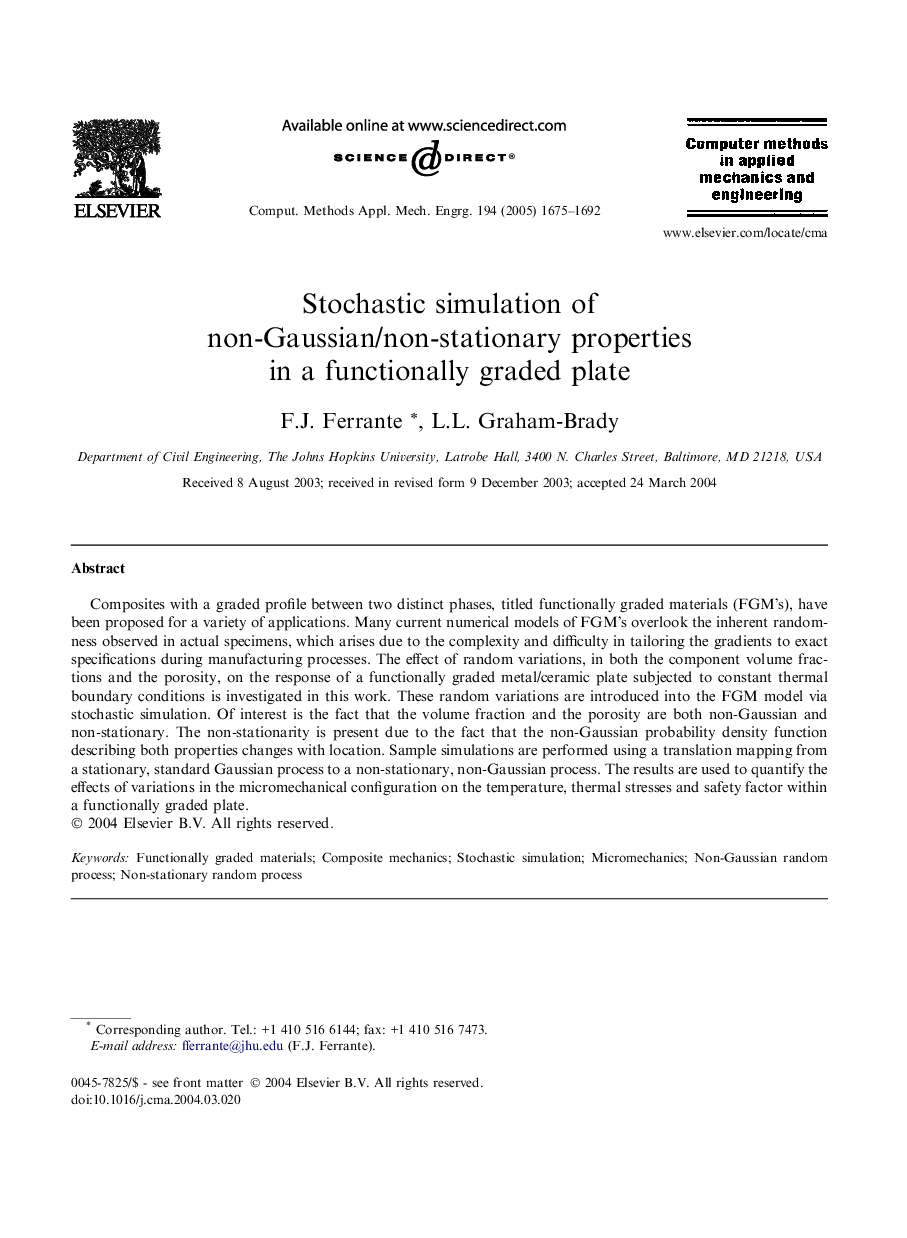| Article ID | Journal | Published Year | Pages | File Type |
|---|---|---|---|---|
| 9667108 | Computer Methods in Applied Mechanics and Engineering | 2005 | 18 Pages |
Abstract
Composites with a graded profile between two distinct phases, titled functionally graded materials (FGM's), have been proposed for a variety of applications. Many current numerical models of FGM's overlook the inherent randomness observed in actual specimens, which arises due to the complexity and difficulty in tailoring the gradients to exact specifications during manufacturing processes. The effect of random variations, in both the component volume fractions and the porosity, on the response of a functionally graded metal/ceramic plate subjected to constant thermal boundary conditions is investigated in this work. These random variations are introduced into the FGM model via stochastic simulation. Of interest is the fact that the volume fraction and the porosity are both non-Gaussian and non-stationary. The non-stationarity is present due to the fact that the non-Gaussian probability density function describing both properties changes with location. Sample simulations are performed using a translation mapping from a stationary, standard Gaussian process to a non-stationary, non-Gaussian process. The results are used to quantify the effects of variations in the micromechanical configuration on the temperature, thermal stresses and safety factor within a functionally graded plate.
Keywords
Related Topics
Physical Sciences and Engineering
Computer Science
Computer Science Applications
Authors
F.J. Ferrante, L.L. Graham-Brady,
